Already familiar with the standard 6-Pin DCC plug, our friend “NEM 651” ? Meet Next18, Plux12 and MTC14; slowly making their way in our N-Scale locomotives.
I just bought a Piko diesel railcar with a Plux12, so I thought an overview of all these DCC plug types would be interesting. Oh, and also, it was high time to speak out: stop coming up with new plug types!
Foreword: It’s a small – now overcrowded – world
It”s no secret: new generations aren’t particularly into model trains. That said, European manufacturers have done a decent job recently, changing the hobby into something more future-proof. We have color touchscreens, iPad or iPhone apps, and more gadgets are coming….
As for getting a new clientele, Märklin has reportedly had a huge success with its “My World” toy range, and other brands offer “low cost” children proof H0 models. In a word: some of these manufacturers have understood the basics:
- The market is limited already: cherish & exploit the current base.
- The market is not getting any bigger on the long term: get young people to like trains, and fast!
Sadly, this time, those same manufacturers are shooting themselves in the foot. Simply said, the multiplication of DCC plug types – especially for our beloved N scale – is stupid :
- It complicates the life of customers (Which plug is it? Which decoder fits?)
- It complicates the job of DCC manufacturers (Release new decoders or abandon parts of the market).
- It doesn’t make the customer stick to your brand.
A DCC plug that is incompatible with my existing decoders could drive me AWAY from a manufacturer, but can’t make me stick to one brand. This is not the computing industry: customers will always buy trains from several brands, because each model is different. - It scares the hell out of people interested in model railroading, or a conversion from analog to DCC
It should be noted that the manufacturers have no excuse: it IS a small world. Many of them are located in Germany and meet regularly. In fact, 2 of these 3 news formats are already NEM “norms”.
If model railroading was a billion dollars industry, they could afford a war (think about Blu-Ray vs. HD-DVD, or VHS vs. Betamax); but it just isn’t.
So here is a short presentation of what you – the victim of this ridiculous format war – will have to deal with.
NEM 651 – The old lady
NEM 651 doesn’t require many explanations. It is the most common plug found in DCC ready trains, both in Europe and the US.
It is simple mechanically (6x 1,27mm Pins) and electrically. It supports a motor (of course), and two lights (front and rear), that’s it.
Kato Digital Plug – The exotic
Although Kato does provide European or US models with a standard NEM 651 plug (e.g.: 2nd gen Thalys), they have developped a digital plug of their own. It can be found for example in recent Shinkansen products.
It doesn’t do more than the NEM 651, in fact, it does less: with only 4 pins (motor and track), it is designed to be put in the middle of an EMU, therefore not controlling lights at all.
Plux12 – Same recipe, but better
Plux12 is simple: it has 12 Pins (2 rows, 6 pin @1.27mm), which is basically a double NEM 651 plug. To be more exact, it has 11 pins (1 empty pin used to mark plug polarity).
Plux12 is not alone, the norm defines Plux8, Plux12, Plux16 and Plux22. However, the 12 Pin variant is what seems to be making it to our N rolling stock for now.
It includes 2 extra function outputs (i.e. 4 in total including front and rear lights), and 2 loudspeaker connections, which seems reasonable for what we can pack in our locomotives.
The NEM documentation also clearly states the necessary space to be reserved for the decoder. Something which – if respected – would save a lot of headaches.
Next18 – So fancy, but not flexible
Next18 (aka NEM 662) is “kinda like Plux12, but cooler”. It boasts a different connector, more compact, such as one seen on modern circuit boards.
It also has more functions:
- 4 functions load outputs (front/rear lights + 2 others)
- 4 logical functions OR 2 logical functions and 2 speaker outputs.
Now, technically, Next18 seems to be the most advanced plug.
But this norm has 2 flaws if you ask me:
- It has a split personality. The norm defines “Next18” and “Next18-S” (S as in sounds). These are actually similar plugs, but the “official” space to be reserved for the sound version is larger.
- Since the specific plug of Next18 doesn’t allow for any margin (the decoder needs to be flat, you can’t “gently bend” the pins as we are used to), that means a locomotive built for Next18 without sound will likely never be easily fitted with an Next18-S (sound) decoder.
Also, don’t get fooled by the fancy name. Because the connectors are so small, several pins are actually paired together (e.g. track pins), to allow for more power to go through. So in reality, there are not 18 pins on this decoder, only 14 ! (See specification PDF at the bottom).
MTC14 – The unwanted child
MTC14 was announced last year by Märklin for the Minitrix N scale (see news in German here).
I have read different reports as to what it can do. It has 14 pins, can support 2 extra light functions, and also integrates 2 SUSI pins (i.e. external sound modules).
The fact is: this is a manufacturer-specific plug type. Märklin somehow disagreed with the others, and launched a new plug type on their own.
ESU or other decoder manufacturers have not – to my knowledge – announced any kind of support for MTC14; so if you buy an MTC14 locomotive from Minitrix, you’re pretty much stuck with buying the (only & overpriced) Minitrix MTC14 decoder.

Minitrix 12102, BR185.6 with MTC14 connector ©Minitrix
Conclusion and summary table
The “old” NEM 651 plug needs an upgrade, no one can deny that. We can pack more functions in N locomotives now than 15 years ago. The problem is not the NEM 651 being replaced, it is the plug standard becoming fragmented.
If NEM 651 were to disappear, my bet is on Plux12. It brings enough functions, has a clearly defined norm, and still uses “basic” 1.27mm connectors.
Next18 sounds fancy, but the plug doesn’t bring the flexibility needed in very small locomotives. Most of us have already played with (and broken), some of those NEM651 pins. It’s annoying when it happens, but at least we were given a chance to make it fit!
July 2014 Update: After testing, the Next18 interface now has my preference. Read the Next18 review here: Next18 digital interface: N scale’s future?
January 2015 Update:
Next18 (NEM 662) seems to be gaining traction, but all manufacturers don’t agree yet:
1) Arnold (Hornby International) is starting to equip some models with Next18, seems they have chosen their side (table in article updated).
2) Brawa announces further models with Next18 (news in German here). Doehler & Haass decoders are used for the sound models (which is new for Brawa).
3) According to some rumors, Piko may soon be using Plux16 (not Plux12) on some models. It’s the same interface with additional outpus/pins. Yet another annoying change from Piko (although to be fair, a Plux12 decoder will fit in a Plux16, but you may miss some train functions).
4) The (only) mTc14 decoder from Minitrix (66840) is actually a Doehler & Haass decoder (codename DH14), but there are already 3 versions on the market. People with a D&H programming device can detect the exact version they have and even benefit from the firmware updates from D&H (details in German on the D&H FAQ page).
Here is a quick summary:
Share your thoughts about all these plugs in the comments!
External links
- NEM 651 Norm (PDF) in French or German
- NEM 658 “Plux12” Norm (PDF) in French or German
- NEM 662 “Next18” Norm (PDF) in French or German
Note 1: If you wonder why those are not available in English, ask the European MOROP in charge of publishing NEM norms… somehow there must be a guy in there still persuaded that French is an international language 😉
Note 2: To my knowledge, none of these plugs (except the old NEM 651) have been adopted or even reviewed by the American NMRA. I wish good luck to my American friends buying European rolling stock in the next months, finding appropriate decoders is gonna be tough!
This article was written with the N scale in mind
Although some of the content is relevant for other model railroading scales, if you are using another scale, additional or more accurate information might be available elsewhere!

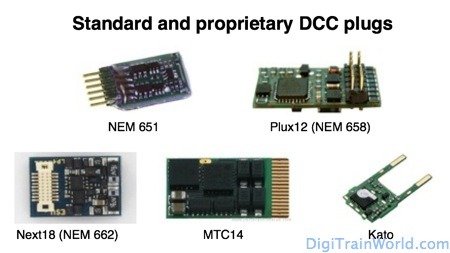


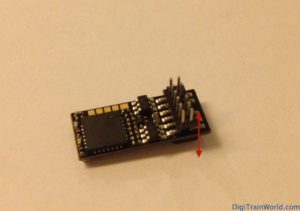
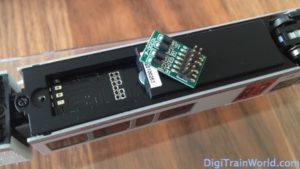

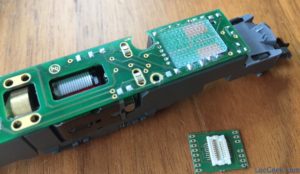







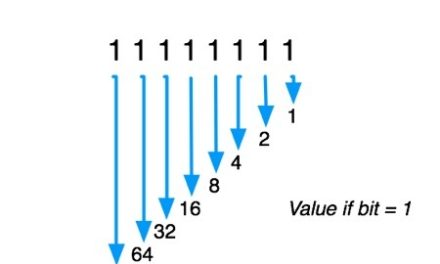
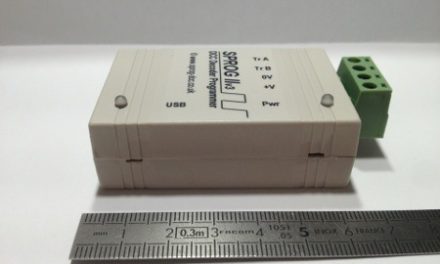
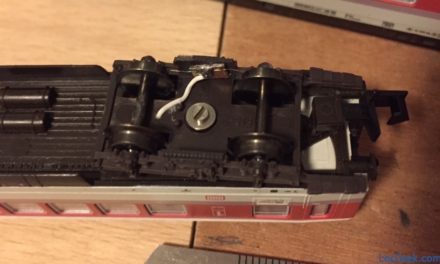
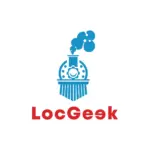

Spot on. This is an absolutely ridiculous and really stupid development in the industry for the reasons you stated really well! I just recently have been exposed to the slot car world where that industry took the also stupid direction of each manufacturer developing its own ‘digital’ system. As with model rr’ing, the hobby is such a niche that more than one standard other than questionable ‘brand protection’ motives (here’s a clue: just make the best models at the best prices instead!) is really annoying. Okay, I clearly agree and you’ve got me started ranting! Excellent post!
Thanks for being one of my first regular readers Jerry 😉 I have discovered I am going to have trouble installing my Plux12 decoder in the Piko EMU pictured in the article, I’ll post about it.
I should add a small correction. The Plux standard (Plux-12 and the whole familly) is actually not that recent, the norm was defined in 2009. This was reminded to me on a German forum yesterday.
In fact, for some reasons these plugs are now being used in N as well. This doesn’t really change my argument thought…
I agree. In fact, let me share with you one of my opinions. When I first got involved with non-US N Gauge modelling, I was suitably impressed with the NEM 651 standard in Europe. Contrast that with the US, where there are a multitude of specialty produced decoder / lighting boards, I was quite impressed with the relatively simple and uniform NEM 651 standards from every European manufacturer. I think these manufacturers miss a really important facet of the hobby…when I order a locomotive today, I know that in most cases having on hand a couple of NEM 651 decoders will allow me to quickly convert that locomotive to digital. In this new future, I’ll now need to order a ‘special’ decoder. This is enough of a hassle that I might choose another model instead.
Marklin/Minitrix’s actions are really the most ridiculous. I’ve been less impressed with Minitrix releases in the past few years (contrast with the volume and quantity that Hobbytrain and Piko produce!), and this further makes them more of niche player in my mind, which is too bad!
BTW…great blog! Keep it up!
Hello! Nice overview. You will like to know that in fact the NMRA has developed parallel specifications for the NEM 651 and various PluX connectors in RP 9.1.1!
Thanks a lot for pointing out that document! I knew indeed the NEM 651 was standardized in N-America a well, this confirms it.
It’s funny though, for the PluX connectors: only PluX8 is mentioned for the N-Scale (I don’t think any manufacturer in Europe uses, nor plans on using PluX8). In fact, PluX12 – the only one now used in N on our side of the pond – seems totally absent from these specs 🙁
Wow, hadn’t noticed, but you are right! Do you have a link to the European standards for PluX12? Considering implementing it for our next round of DCC decoders, given your commentary here…
Sure, this is defined in “NEM 658”. As usual the Morop only publishes in German (http://www.morop.eu/de/normes/nem658_d.pdf) or in French (http://www.morop.eu/fr/normes/nem658_f.pdf). Maybe someone translated it somewhere?
As you had surely guessed, this blog post was written from a “hobbyist” point of view. As a business person in the real world (but not in the train business), I’d strongly advise checking the numbers before considering PluX12 devs. I don’t know if Piko and other “Plux12 friendly” brands have a reasonable market penetration….
Hello! Tran builds a Next18 Sounddecoder in a normal Next18-Formfactor. Thats nice…
Hi Mario, I had a look at the tran.at website. I am guessing you’re talking about the SL76Next18S.
Thank you very much for mentioning that!
Hi Pierre,
I’ve got a SL76Next18 here. It works pretty good. Basically it is a normal SL76 on a new pcb, having the same features. And it really fits into the normal Next18 Formfactor 🙂
Whether or not we like it at least the NMRA standard has kept the market in a reasonable shape with interchangeability between manufacturers allowing us to keep a stock of decoders ready for use as we build locomotives and the CTe is very useful for small locos of 2mm scale. I do not think NMRA will like being sidelined. Bachmann is going down the route of Next18 and does this mean that 6 pin will be phased out and we will not be able to get replacements for existing locos if blown? Will our stocks become useless? This is something that is happening all over in the computer world making existing equipment obsolete by companies making changes so you will have to start again and buy all newproducts. No we do not want it, but it will be powered by fools that must have the latest because they mistakedly think it is best. Well its madness, defeats standardisation a bit like the VHS v Betamax and DVD formats. You did a good job on explaining as I won
dered what Next18 was.
Thanks for the comment!
I don’t think you need to worry about NEM651 disappearing anytime soon, for a simple reason: there will always be a market for decoders with wires (e.g. no interface, for old locomotives), and it makes sense for those same decoders to have wire connectors that match the (old but proven) NEM651 pin order.
Also, even manufacturers now supporting Next18 only are releasing SOME NEW models with Next18. There will be NEM651 models in their ranges for a long while.
I agree that the NMRA has a better vision than european manufacturers, and above all a better purpose than the MOROP – the European counterpart. The MOROP is, in my humble opinion, a joke. It is a registration administration that standardises everything that the members (the manufacturers) submit. Which is why every single one of the new plugs I mention are “NEM standards” if you believe the MOROP…
Without the NMRA, DCC (after all, a German technology) wouldn’t have become a defacto-standard…
On the other hand, one must admit that the NMRA sometimes is very conservative (the American market isn’t as much “gadget” oriented as Europe IMHO). The NEM651 plug is old fashioned, and there needs to be a new interface with much more outputs. Technology has evolved, and especially in N scale, we can fit much more in the trains now!
Yes, it’s sad that we have to go through a regular standard war, with no oversight and the market deciding (VHS vs. Betamax). But as long as the war doesn’t last for too long, the consumers won’t be hurt *too* much. Right now, Next18 seems very well placed. The only big player really causing a problem is Märklin/Minitrix. They have a huge market power and hold on to their proprietary mTC14 for now…
We’ll see. Glad my article could clarify some things for you!
Excellent article that is a reference on the subject. Thank you Pierre.
I have taken the liberty to refer to it in an article that I have published on TroveStar ( http://www.trovestar.com/generic/blog.php?Article=177 ).
Pierre,
Another reference to your excellent article: http://www.trovestar.com/generic/blog.php?Article=286
Best article so far on the subject.
Cheers,
Alain LM
Thanks Alain!